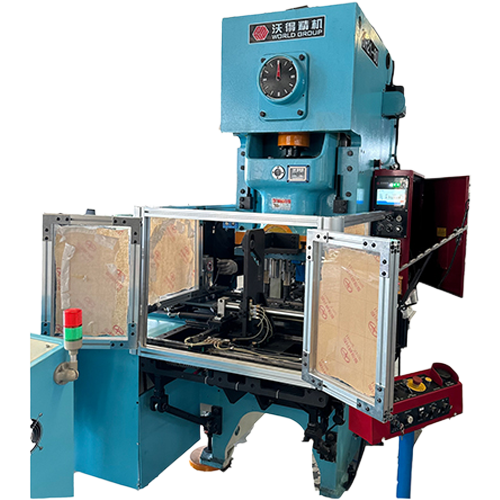LK Machinery
LK Machinery
LK Machinery
LK Machinery
LK Machinery
LK Machinery
LK Machinery
LK Machinery
LK Machinery
Industry Dynamics
Analysis of sealing technology and process of metal cans
Can sealer The quality of the seal of a metal can is decisive for the quality of the product it carries. If the tank seal is not ideal, it will not only damage the sensory quality of the product in the tank, but also make the air and bacteria organic, causing the product to deteriorate and shorten the shelf life. The double folded edge sealing technology can tightly connect the tank lid to the tank body, forming an airtight sealing state and a flat folded edge. In addition to improving the sensory quality of canned food, it can also extend the shelf life of the product.
However, after the double hem process is completed, its internal structure cannot be observed intuitively, and the tightness of the hem seam and the lap ratio are more difficult to judge from the appearance. To check whether the metal can packaging is qualified, you can only use special tools, such as: double-edge detector, can edge projector and metal serrated knife single-voltage/double-voltage data meter.
When using the above tools, only the metal cans can be sampled and tested, and the edge structure needs to be disassembled. After testing, the sampled metal cans will be scrapped. Such test results are insufficient and increase canning costs, resulting in energy waste. Nowadays, how to reduce the scrap rate and find more effective detection methods has become a key issue that needs to be solved urgently in the metal packaging industry. During the sealing process, the sealing roller plays a vital role in double crimp forming. Although the configuration of the roller groove curve in the tank sealing machine is regular, the values of the selected component curves also vary due to different production conditions in each factory. At present, there is no unified and common roller groove curve standard at home and abroad.
In this context, how to select the appropriate roller groove curve and further optimize it is also an important topic facing the metal packaging industry. The finite element method is a computational method that has emerged from the rapid development and widespread application of electronic computers. It is a numerical method that approximates the solution of general continuum problems. Through numerical simulation of finite element analysis, parameter analysis and optimization of product mechanical structure performance can be achieved efficiently and cost-effectively. In fact, finite element analysis has become a numerical alternative to a large number of physical tests “virtual tests”. The application of finite element analysis software to the virtual simulation, roller groove curve performance analysis and optimization of the double blanking process of tinplate three-piece tanks has significant economic and social benefits and can be extended to the production of other similar products. This has important practical significance for promoting the development of my country's packaging machinery industry. It will help improve the high production efficiency, sealing quality, cost reduction, scrap rate of tank sealers, improve material utilization and roller life, help accelerate the new product development cycle, reduce the workload of engineering and technical personnel, and help reduce the difficulty of trial production and process exploration work, thereby improving the market competitiveness of products.
However, after the double hem process is completed, its internal structure cannot be observed intuitively, and the tightness of the hem seam and the lap ratio are more difficult to judge from the appearance. To check whether the metal can packaging is qualified, you can only use special tools, such as: double-edge detector, can edge projector and metal serrated knife single-voltage/double-voltage data meter.
When using the above tools, only the metal cans can be sampled and tested, and the edge structure needs to be disassembled. After testing, the sampled metal cans will be scrapped. Such test results are insufficient and increase canning costs, resulting in energy waste. Nowadays, how to reduce the scrap rate and find more effective detection methods has become a key issue that needs to be solved urgently in the metal packaging industry. During the sealing process, the sealing roller plays a vital role in double crimp forming. Although the configuration of the roller groove curve in the tank sealing machine is regular, the values of the selected component curves also vary due to different production conditions in each factory. At present, there is no unified and common roller groove curve standard at home and abroad.
In this context, how to select the appropriate roller groove curve and further optimize it is also an important topic facing the metal packaging industry. The finite element method is a computational method that has emerged from the rapid development and widespread application of electronic computers. It is a numerical method that approximates the solution of general continuum problems. Through numerical simulation of finite element analysis, parameter analysis and optimization of product mechanical structure performance can be achieved efficiently and cost-effectively. In fact, finite element analysis has become a numerical alternative to a large number of physical tests “virtual tests”. The application of finite element analysis software to the virtual simulation, roller groove curve performance analysis and optimization of the double blanking process of tinplate three-piece tanks has significant economic and social benefits and can be extended to the production of other similar products. This has important practical significance for promoting the development of my country's packaging machinery industry. It will help improve the high production efficiency, sealing quality, cost reduction, scrap rate of tank sealers, improve material utilization and roller life, help accelerate the new product development cycle, reduce the workload of engineering and technical personnel, and help reduce the difficulty of trial production and process exploration work, thereby improving the market competitiveness of products.
Recommended Products


 EN
EN
 中文简体
中文简体 English
English













